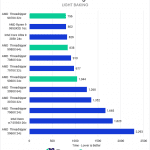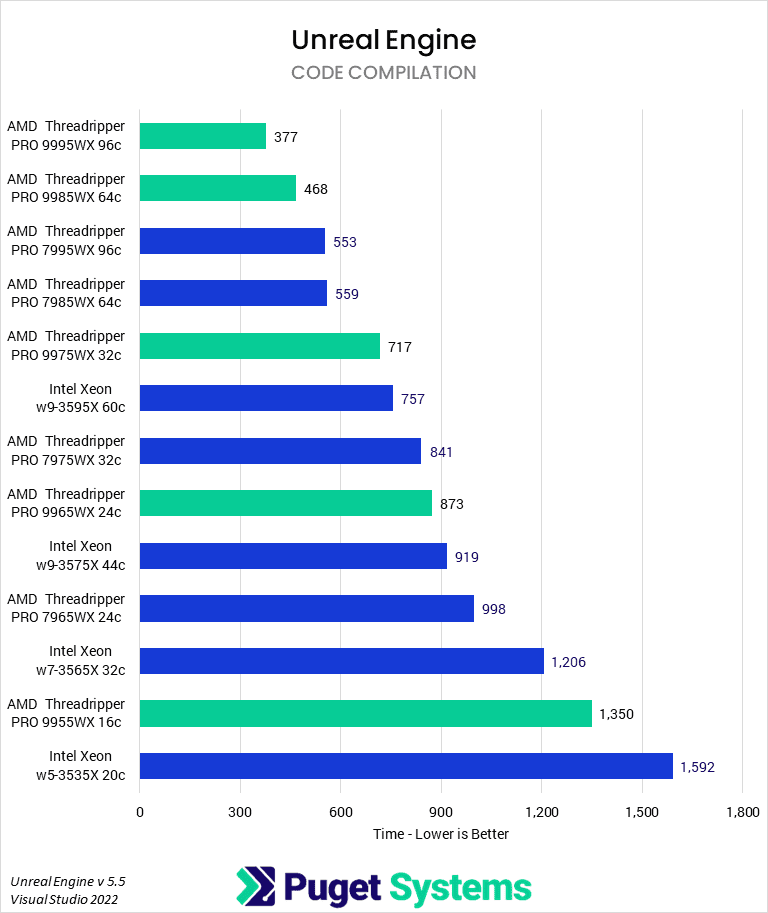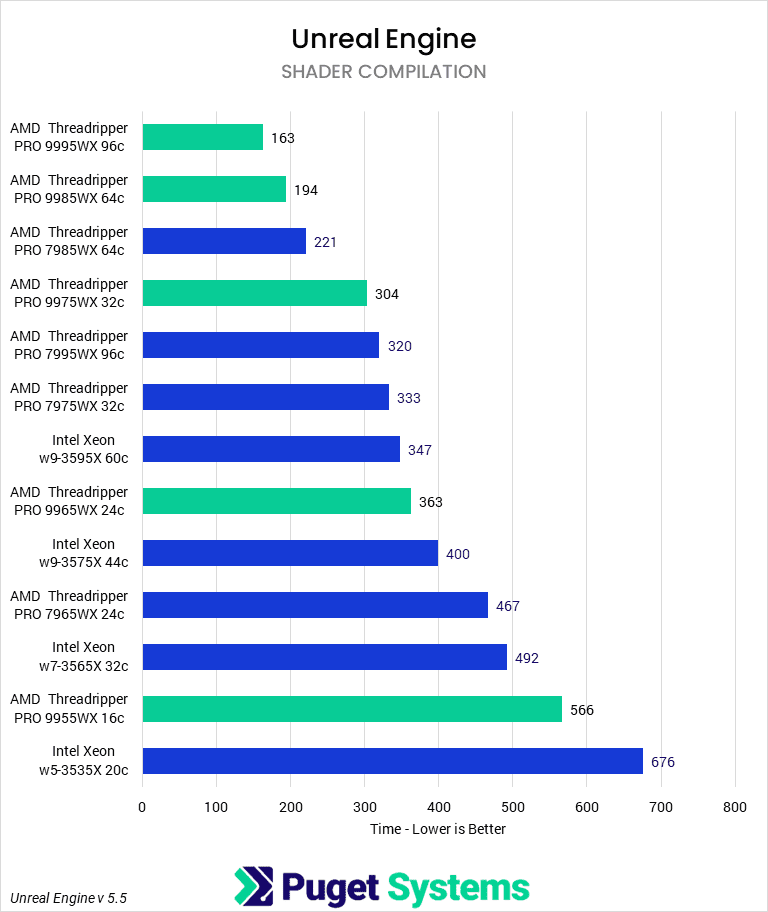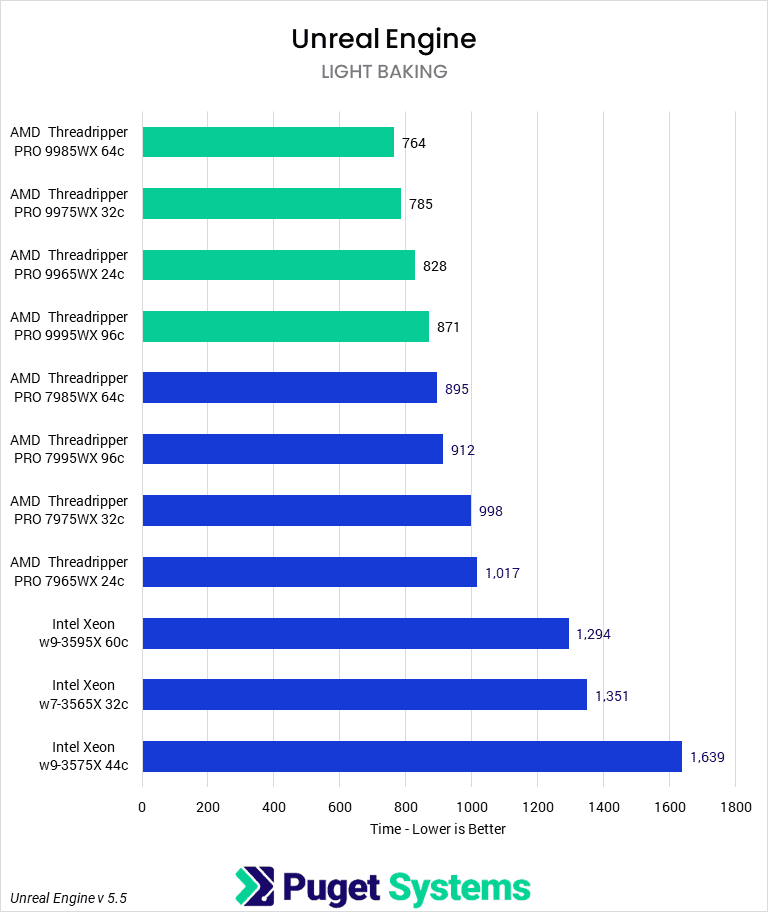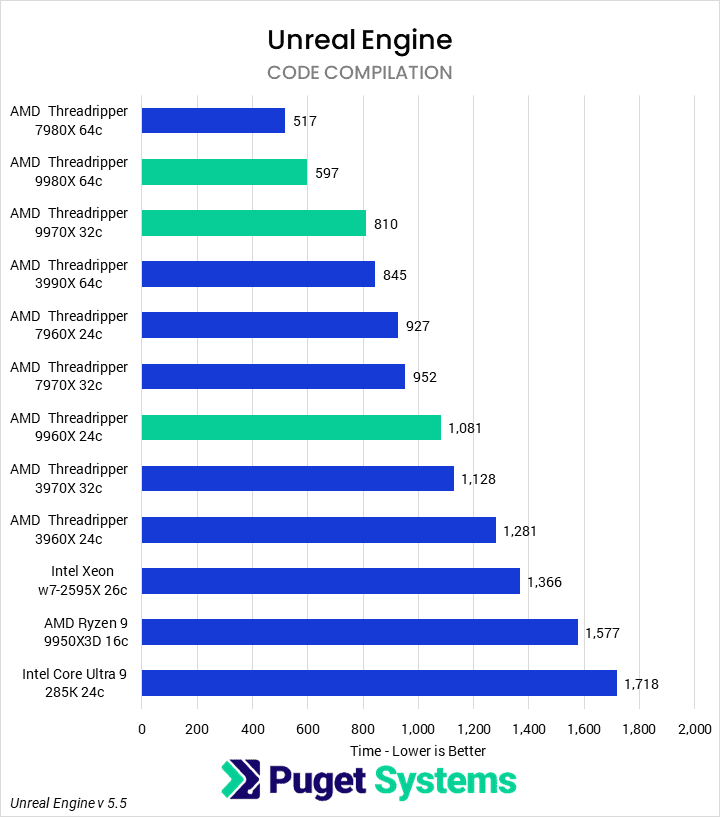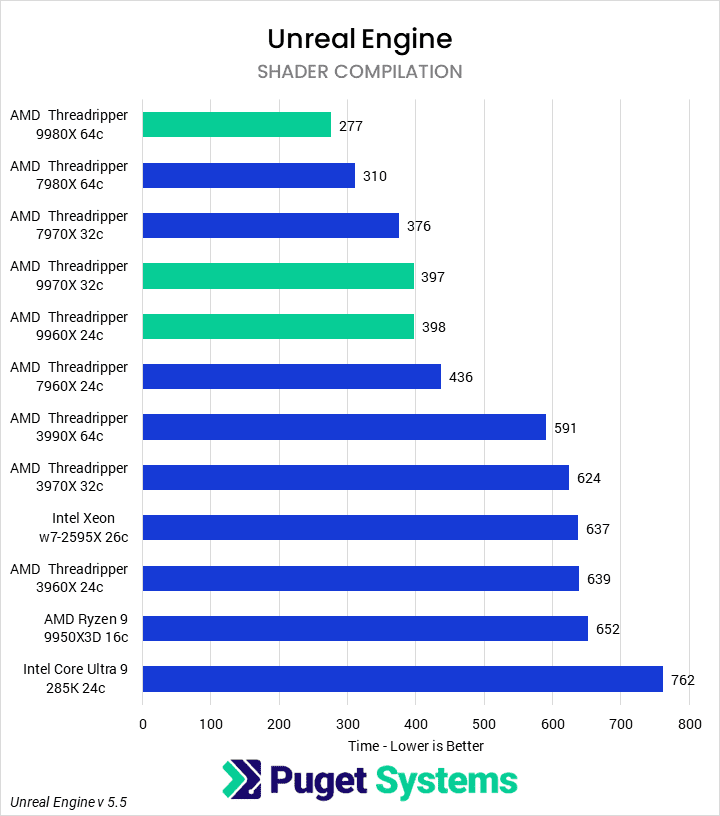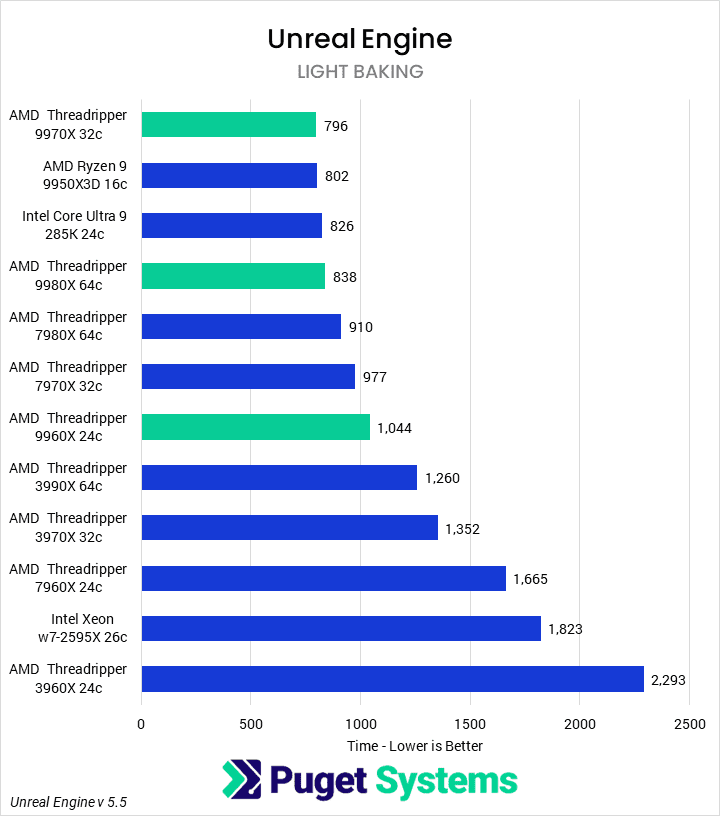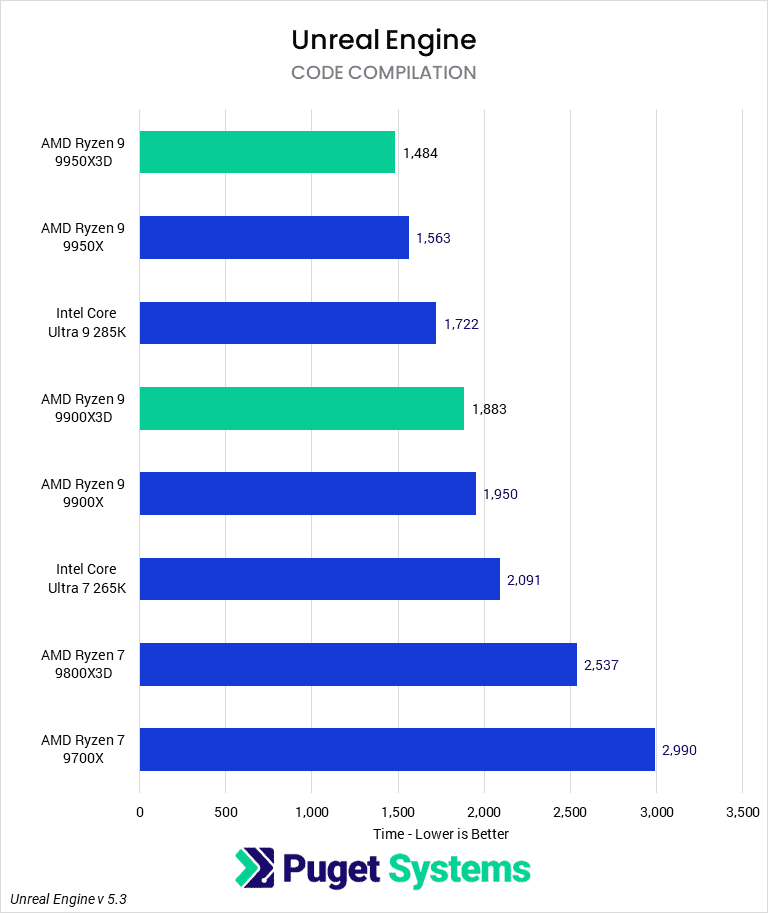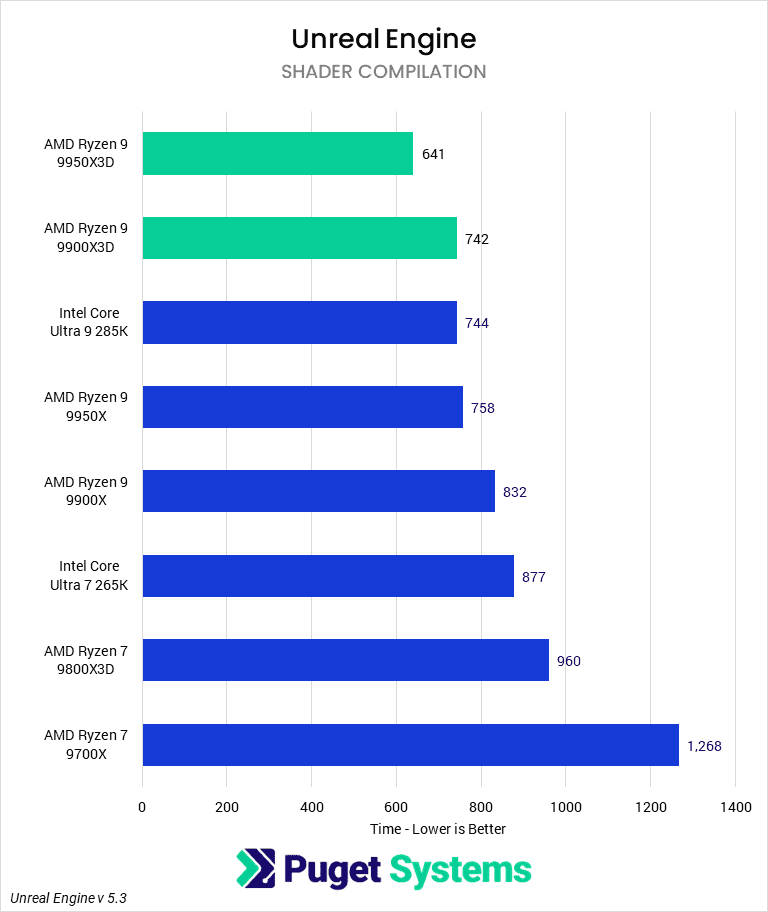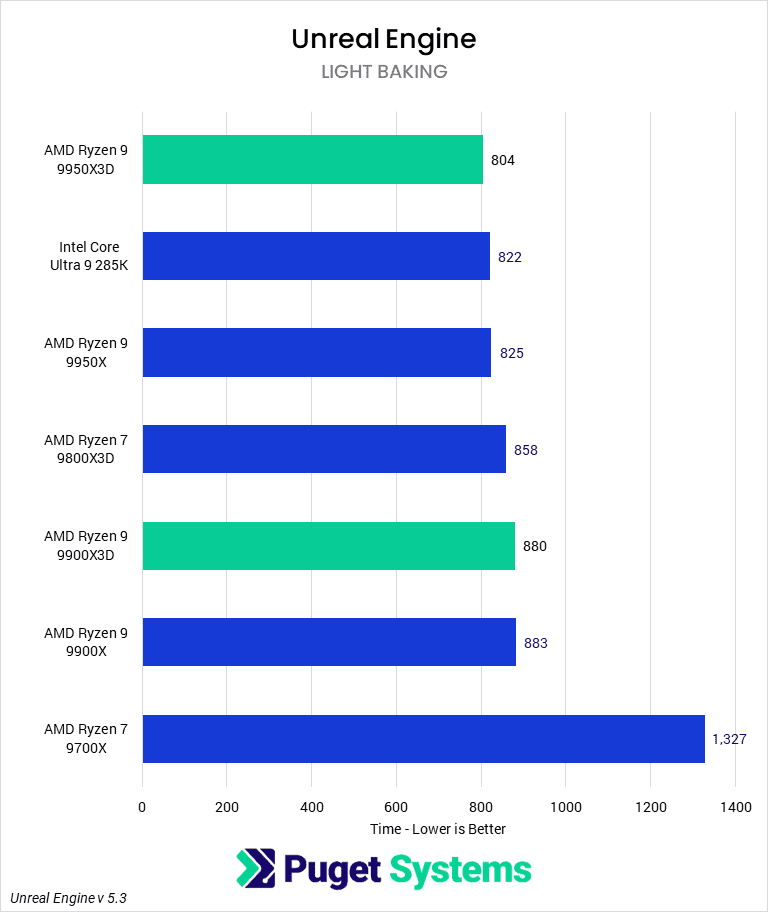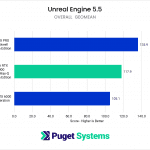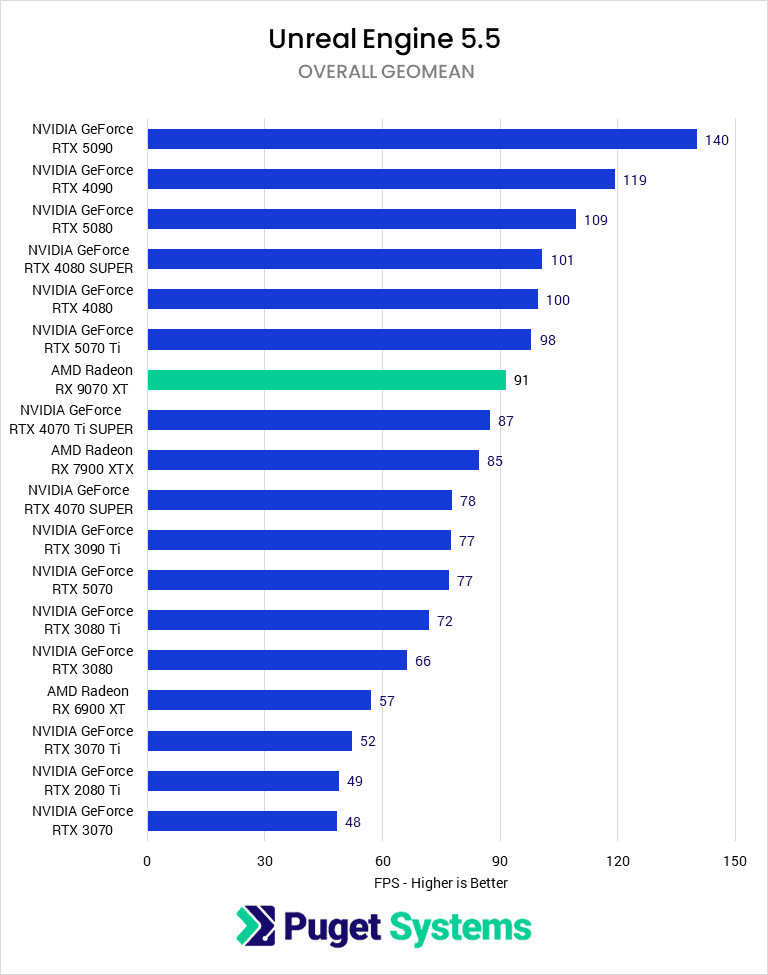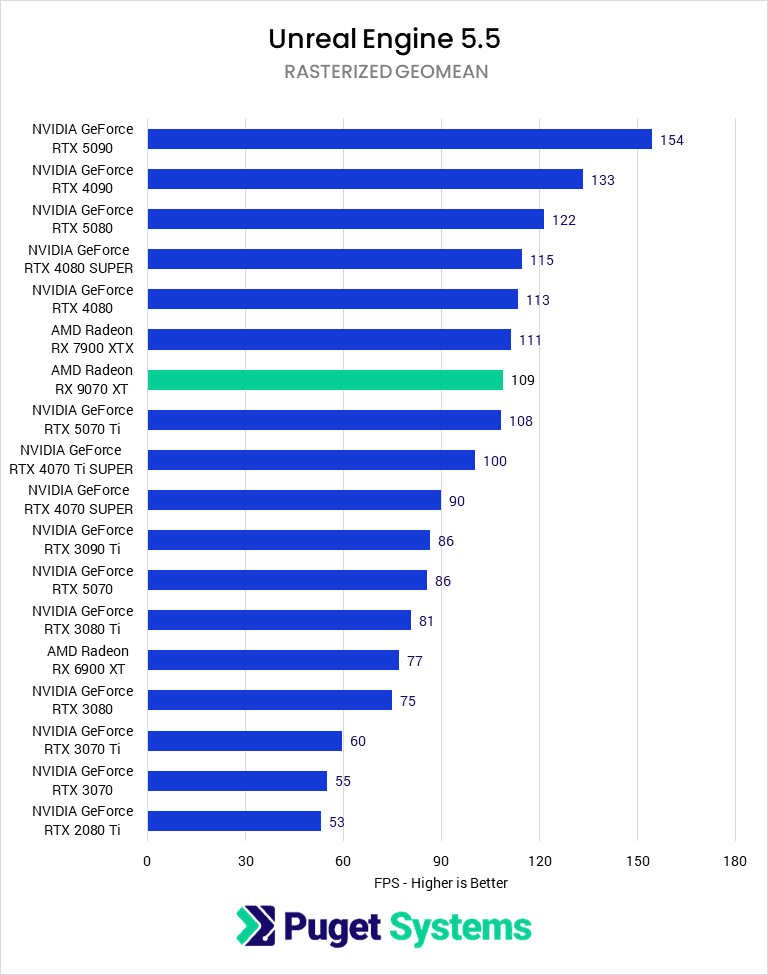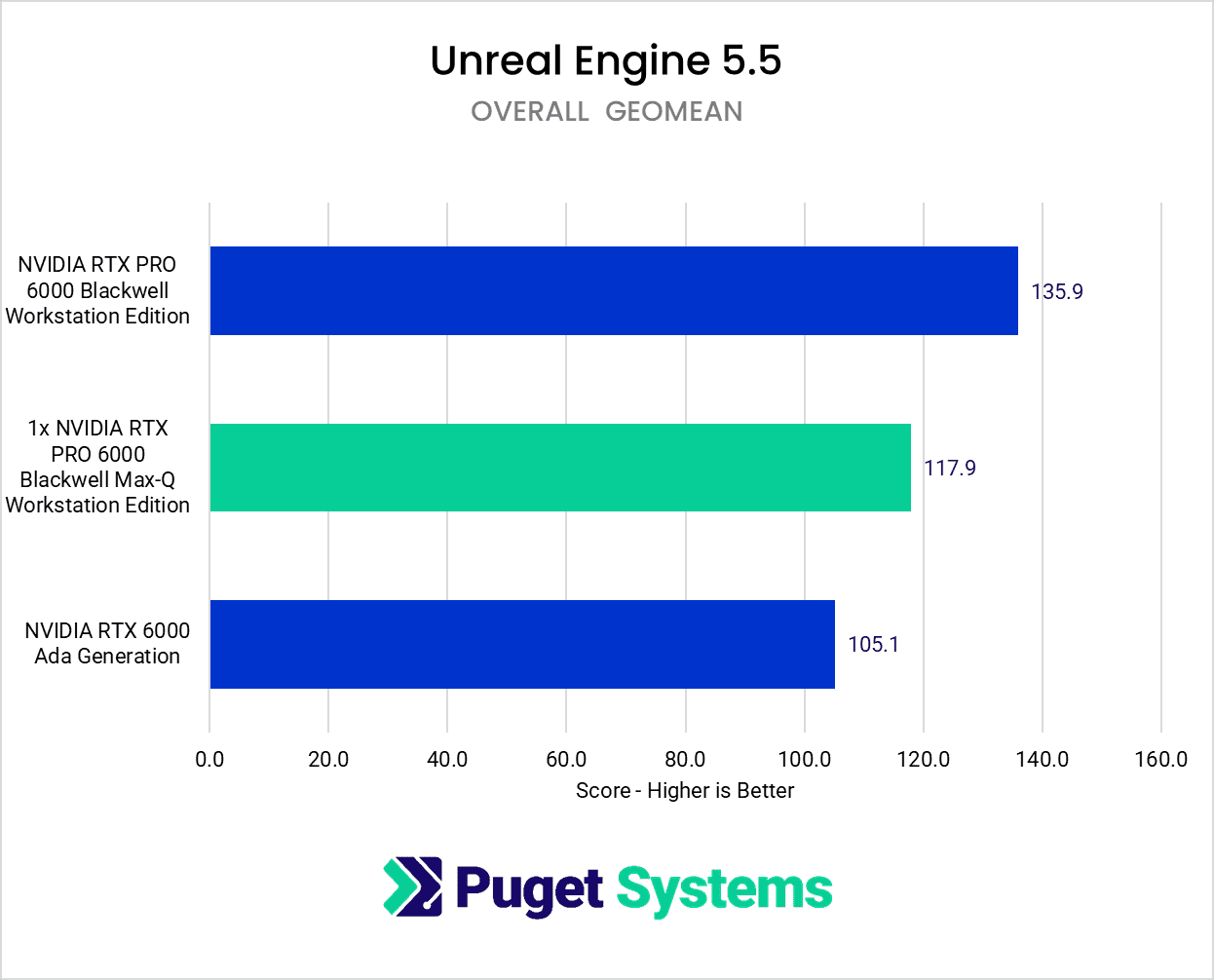
Hardware Recommendations for Unreal Engine
Our Puget Labs team has performed extensive testing with Unreal Engine to determine what hardware will give you the best performance across a wide range of workflows.
Puget Labs Certified
These hardware configurations have been developed and verified through frequent testing by our Labs team. Click here for more details.
Unreal Engine System Requirements and Benchmarks
Quickly Jump To: Processor (CPU) • Video Card (GPU) • Memory (RAM) • Storage (Drives)
Like most software developers, Unreal maintains a list of system requirements for Unreal Engine that can be used to help ensure the hardware in your system meets their minimum requirements. However, most “system requirements” lists tend to cover only the very basics of what hardware is needed to run the software, not what hardware will actually give the best performance. In addition, these lists are often outdated, list old hardware revisions, or simply contain sub-optimal hardware.
Because of how inconsistent those lists can be, we’ve taken the time to perform testing to determine what hardware runs Unreal Engine the best. Based on this testing, we have come up with our own list of recommended hardware.
Processor (CPU)
How does Unreal Engine utilize the CPU?
The processor (or CPU) is one of the most important pieces of an Unreal Engine development workstation. While many other parts of the system impact performance to some degree, the CPU is the core piece of hardware that is a part of absolutely anything and everything you do. Based on our extensive CPU testing in Unreal Editor we have narrowed down the hundreds of CPUs available to just the few that are the best choices for developing in the Unreal Editor.
What is the best CPU for Unreal Engine?
For most users, Intel’s Core™ Ultra and AMD’ Ryzen™ 9000 Series are both terrific choices. Both families of CPUs score similarly in most of our Unreal Engine frame rate benchmarks, providing solid performance for most users.
For those that need the best possible performance for heavily threaded tasks like compiling code and shaders, we also offer a number of high core count CPUs depending on both your budget and the performance you need for these tasks. The AMD Threadripper™ 9970X is about twice as fast as the Core Ultra models for compiling – while the Threadripper 9960X and 9980X also offer great performance and are additional options depending on your budget. For users who want the fastest compiling available, AMD’s Threadripper™ PRO models offer even more cores. All of these CPUs are substantially more expensive than mainstream models, though, so we typically only recommend one of them for users who spend a significant amount of time compiling shaders or code.
Can I use a laptop for Unreal Engine?
Yes, there are laptops with sufficient speed to run a wide range of game dev apps very well – including Unreal Engine itself. Performance will generally be a little lower than a comparably-priced desktop workstation, but a powerful notebook PC like our Puget Mobile Workstation is great.
Video Card (GPU)
How does Unreal Engine utilize video cards (GPUs)?
Unreal Engine utilizes the video card primarily to display the graphics on the screen. Many applications in other fields have begun using the GPU for other tasks as well, but this is only starting to be implemented in the Unreal Editor. Because of this, a faster video card will give you a higher FPS in the viewport or in a stand-alone game, but likely will not improve your productivity in other tasks.
What is the best video card for Unreal Engine?
Any high-end GeForce or RTX professional video card will work well in Unreal Engine, but here are some of the top models currently available:
- NVIDIA GeForce RTX™ 5080 16GB – This GPU offers great performance for its price, and has plenty of power to handle multiple displays without a problem.
- NVIDIA GeForce RTX™ 5090 32GB – With 32GB of VRAM and terrific performance, the RTX 5090 is one of the best GPUs to use for game development, Virtual Production, and Architectural Visualization and our recommendation if you plan on developing VR content. The high amount of VRAM makes it suitable for workstations with three or even four 4K displays and the extra power is great for games that have not been optimized.
- NVIDIA RTX PRO™ 6000 Blackwell Workstation Edition 96GB – NVIDIA’s professional graphics line offers the ability to sync multiple systems together along with video walls and certain video cameras. This is a much-needed feature for certain Virtual Production workflows and is available with many professional RTX GPUs.
Memory (RAM)
How much memory (RAM) does Unreal Engine need?
The amount of RAM you need is going to depend on your specific project and whether you do RAM-intensive tasks like building lighting. However, as a general rule of thumb, we recommend:
- 32GB of RAM for most users
- 64GB+ of RAM if you build lighting that takes more than a few hours
Keep in mind that these are only basic recommendations and only cover the amount of RAM needed for the Unreal Editor by itself. If you often work with other programs in addition to Unreal at the same time, you may want to have even more RAM in your system as each program will need its own chunk of RAM.
Storage (Hard Drives)
Our systems offer three different types of storage drives depending on your specific needs and requirements:
- Solid-State Drive – SSDs are a staple in modern workstations, especially as your primary drive containing the operating system and program installations. They are more expensive than a traditional platter hard drive, but also many times faster allowing you to launch Windows and programs significantly faster.
- PCI-E M.2 NVMe SSD – These drives are a bit more expensive than a standard SSD, but the use of faster PCI-Express-based connections allows them to be several times faster! In some cases, you may not see much of a performance difference since a standard SSD is already so fast that it is rarely a bottleneck, but some projects will be able to open faster with an NVMe drive which can make them useful as a project drive. They are also the fastest option for your OS and applications
- Traditional Platter Hard Drive – These drives may be slower than the SSDs we offer, but they are more affordable and available in much larger capacities. While we do not recommend working directly off these drives, they make terrific long-term storage and backup drives.
What is the best drive setup for Unreal Engine?
In general, we recommend a 2-3 hard drive configuration depending on your budget and desired performance and organizational level:
- Primary Drive – OS/Software (SSD/NMVe) – Includes your operating system and the base Unreal Engine installation. An SSD is highly recommended as it will greatly improve how fast the OS and programs startup, and an NVMe drive is a nice upgrade.
- Secondary Drive – Project Files (SSD/NVMe) – If possible, it is a good idea to separate your project files onto a secondary drive. For most users a standard SSD will work fine, but if you work with large projects there can be a performance benefit to using a M.2 NVMe drive.
- Optional Storage Drive (Platter) – For long-term storage where the high speed of SSDs is typically not required, a larger traditional platter hard drive is a good choice as they are still much cheaper per GB than SSDs. Network-attached storage arrays are also a great option, as they can be shared between multiple workstations and usually offer features to provide some level of data redundancy (protection against losing files if one of the drives dies).





